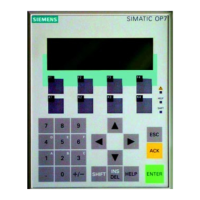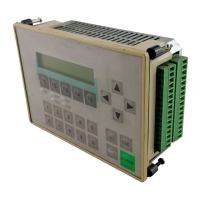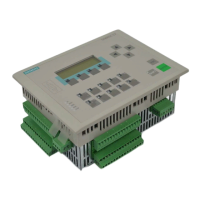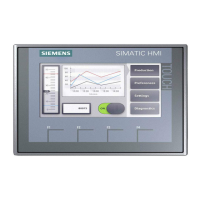With several cyclic interrupt OBs that are to be called at the same time, we recommend setting
a phase offset for OBs with lower priority. For example, OB 38 to OB 32 are called in sequence
at 1,000 ms. The execution time of the cyclic interrupts can be distributed beyond the cycle
using the phase offset. The table below shows the parameter assignments for the example:
Cyclic interrupt OB Execution (processing portion) Phase offset
OB 32 1000 ms (150 ms) 100 ms (>70+20)
OB 33 500 ms (70 ms) 30 ms (>20)
OB 34 200 ms (20 ms) 0
6.1.5 Memory
Local data (priority classes)
Local data is derived from the declaration section of the logic blocks and stored centrally in
the local data storage area. On the "Memory" tab, you can define the local data size in the
work memory for each individual OB. This value must always be beyond the particular local
data requirement.
Each cyclic interrupt OB is assigned a local data size by means of its priority. OB 30, for
example, has the priority 7 and OB 38 the priority 15. The default setting is 2048 bytes for each
cyclic interrupt OB which is adequate for typical quantities of block types. A check is made
when compiling the charts during the engineering phase as to whether a warning threshold
has been crossed (with a default setting of 90%).
If the warning threshold is crossed through importing new block types in complex processes,
first of all increase the maximum size of the local data area (which has a default setting of
65536 for CPU 410-5H) and then maximize the local data for the priority classes used.
Configuration of the hardware (AS and I/O)
6.1 General CPU settings (H system and standard AS)
Compendium Part A - Configuration Guidelines (V8.2)
Configuration Manual, 08/2016, A5E38166869-AA 89

